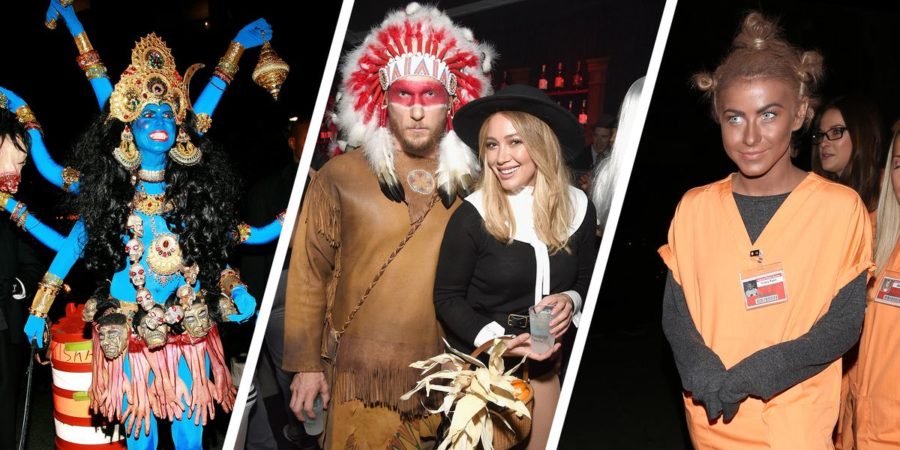Cultural appropriation negatively impacts communities
Black, Indigenous and people of color (BIPOC) have explained how cultural appropriation affects them and their culture in a negative way.
November 22, 2020
Saying that something is your “spirit animal,” doing blackface or using Asian culture as a fashion trend — these are all examples of cultural appropriation.
In Arlin Cuncic’s article “What is Cultural Appropriation?,” Cuncic defined cultural appropriation as the “use of objects or elements of a nondominant culture in a way that doesn’t respect their original meaning, give credit to their source or reinforce stereotypes or contributes to oppression.”
Cuncic further goes on to say although it may be natural for people to try to merge different cultures, there is a line drawn when a dominant group uses elements in a way that the nondominant groups sees as exploitative.
“Appropriation involves a lack of understanding of or appreciation for the historical context that influences the act of what is being taken,” Cuncic said.
Cuncic also pointed out the different types of items that are most commonly appropriated, such as artifacts, dance, clothing and fashion, music, religious symbols, makeup and many more.
Sebastian Braun, director of American Indian studies and an associate professor in world languages, said there is very little left of Native culture that has not been appropriated. Whether it is through movies, books, clothes, stories about the past, Native tropes/subjects and logos, Native culture is everywhere.
Braun said one of the most common ways society sees Native culture being appropriated is through sports team logos. Examples of this include the Cleveland Indians logo, which, according to Braun, is blatantly racist. Another example is fans of sports teams using a tomahawk during a sporting event.
Braun explained other examples of Native cultural appropriation include wearing Native American regalia for Halloween or having students dress up in Native “clothing” for Thanksgiving at school.
Braun said these can be considered an expression of the larger appropriation of the Native American culture.
Braun said these appropriations largely affect people who live in non-Native communities because it prevents people from actually understanding Native culture and history as well as how they live and why they live that way.
“If Americans do not understand the way that Natives live, they will create laws based on their own understanding, which is false,” Braun said.
Braun said there is a feeling among Americans that Natives are no longer around, and those feelings makes it seem like appropriating is OK.
Braun explained that appropriating is when you feel like you have the privilege of taking something without feeling like you have to ask, while appreciation is going to learn something from other people and asking if it is OK to get involved, and if they say no, then you appreciate them enough to not do it.
“Don’t be ignorant; educate yourself,” Braun said. “If you feel like you’re appropriating then you probably are.”
Larissa Begley, an associate teaching professor in history, said cultural appropriation of African American culture and blackface began with the minstrel traditions of the 1830s.
Begley said in the 1830s, there was a white performer named Thomas Rice who witnessed an African American man singing and dancing. There are stories that say the man was physically disabled. Rice then painted himself black, took the man’s clothing, dance and song and started to perform for white audiences.
“All of it was cultural appropriation and harmful mockery,” Begley said.
However, Begley said these minstrel shows became tremendously popular even though each character in minstrel dehumanized African Americans and defended slavery by portraying African Americans as happy, carefree and unintelligent who enjoyed and benefited from their enslavement.
Begley said the songs that were performed during these shows “ripped off” African American musical traditions. She said blackface and costumes involved further dehumanized African Americans.
Begley said in the 1915 movie “The Birth of a Nation,” the first movie showed in the White House, “white actors donned blackface and portrayed African Americans as greedy and corrupt politicians and violent rapists,” Begley said. “In the film, the community is ‘saved’ by the KKK and ‘justice’ is gained through lynching.”
But Begley said these dehumanizing images were not only in the entertainment industry but also in products that used blackface caricatures to sell a range of different products, some of them being greeting cards and even food products.
“When a white person darkens their skin and puts on a costume to impersonate an African American, regardless of their own personal intent, it invokes this painful history and trivializes it,” Begley said.
Carolkim Tong, a junior in graphic design, said society and the media have appropriated Asian culture through fashion, yellowface, orientalism and entertainment.
Tong explained the different appropriations that are happening in these categories, such as fashion and how traditional clothing is worn by someone that is not of that culture, how yellowface is used as a costume, how orientalism is imitations and depiction of the Eastern world and how entertainment uses Asian culture as motifs.
Tong said that yellowface, as well as blackface, portrays identity in a disrespectful way that also perpetuates stereotypes.
“It mocks and oppresses a minority group and it is hurtful and offensive,” Tong said.
Tong said that through culture appropriation, elements of a culture’s importance are stripped away by someone else, particularly members of a dominant group.
“Our diversity in identity, traditions, culture and language should be respected,” Tong said.
Tong said a way to avoid appropriating Asian culture is by doing your research and appreciating the culture because cultural appropriation brings up the history of oppression, spreads misinformation in marginalized communities and perpetuates racist stereotypes.
“Appropriating is using elements of someone’s culture and taking it for your own use,” Tong said. “Appreciating is understanding and learning about other cultures and connecting and communicating with one another cross-culturally.”







